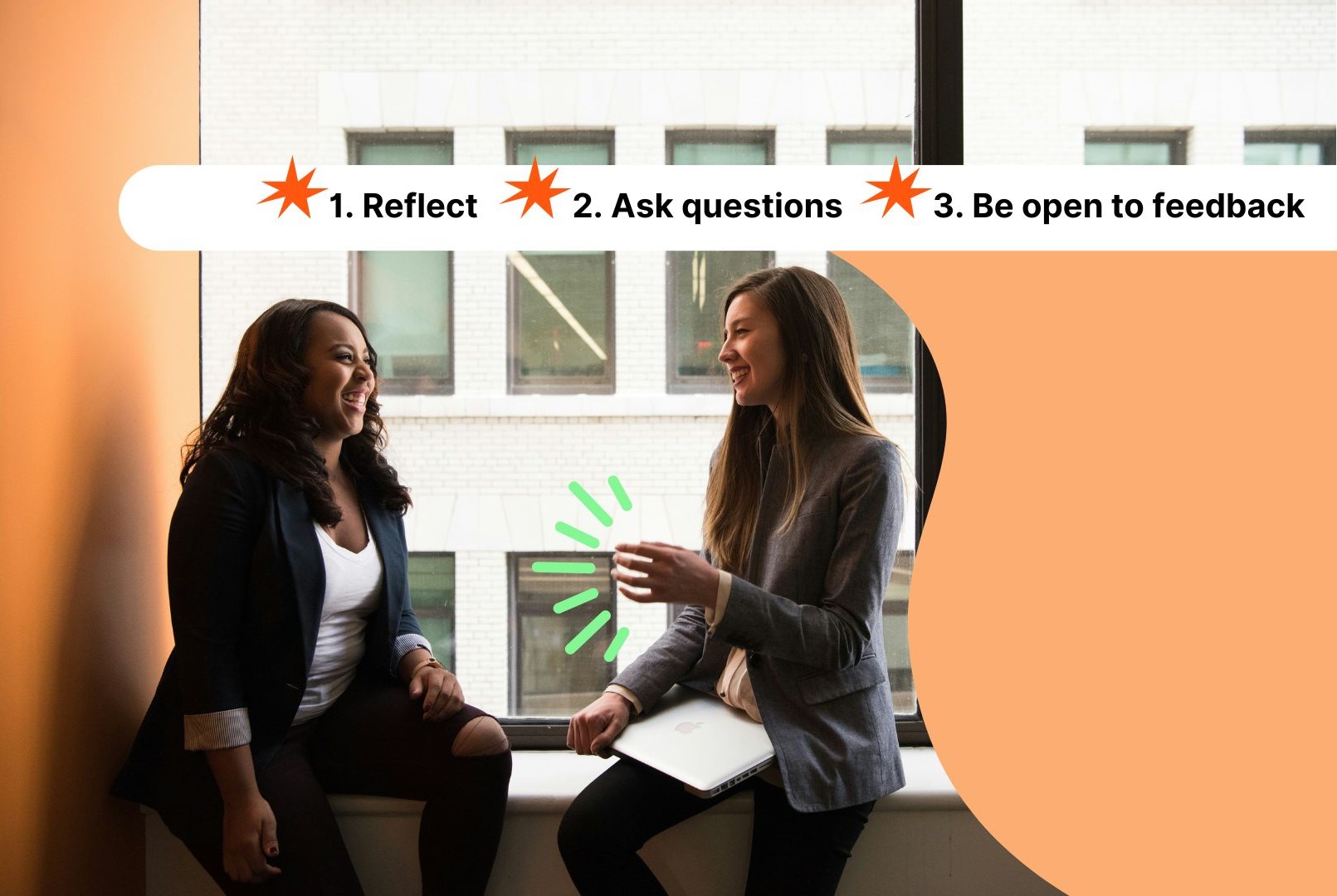Effective leadership matters now more than ever. Leaders who adapt not only in strategy but in communication and approach to challenges win. At the core of strong leadership is the growth mindset. Believing that skills can be developed through effort keeps teams learning, iterating, and moving forward. It’s what separates stagnant teams from thriving ones, as being a good leader means creating an environment where people and businesses grow together, not just making better decisions.
This article outlines:
- Growth mindset vs. fixed mindset meaning and differences
- Benefits of growth mindset for leadership development and organizational growth
- Growth mindset and leadership development strategies, highlighting adaptive leadership skills and areas of development for leaders
Growth mindset vs. fixed mindset
Our mindset shapes how we perceive and develop our abilities.
Psychologist Carol Dweck introduced the idea of fixed and growth mindsets. A fixed mindset sees intelligence and talent as set in stone, leading to fear of failure and avoiding challenges. A growth mindset believes skills improve with effort and learning, driving persistence and progress. Dweck’s research shows how these mindsets impact motivation, resilience, success in work, education, and leadership.
Main differences:
1. Born with it or built it?
- Fixed mindset: Thinks talent is something you are born with. Avoids feedback, resists growth.
- Growth mindset: Sees skills as something you build. Puts in the work, learns from mistakes. Loves new challenges, expands their skill set.
2. Stuck or scaling?
- Fixed mindset: Sticks to what they are sure of. Relies on strengths instead of stepping into the unknown. Aims for perfection, not progress. Stays in their comfort zone to avoid looking bad.
- Growth mindset: Always looking to improve. Pushes for better, not just familiar. Doesn’t mind looking like a beginner. Knows growth comes from trying.
3. Failure: threat or tool?
- Fixed mindset: Avoids failure like the plague. Won’t try if there is a risk of messing up.
- Growth mindset: Sees failure as part of the process. Tries, fails, learns, repeats.
Why a growth mindset matters for organizational success
- Increased resilience. Organizations that prioritize continuous learning and adaptability are more equipped to navigate change, with employees seeing challenges as temporary and solvable.
- Better performance. By focusing on learning and development, organizations improve employee performance, motivating individuals to grow their skills and contribute to business success.
- Higher engagement and retention. Meaningful growth opportunities cultivate greater employee engagement and retention by offering pathways for professional development.
- Enhanced innovation. A growth mindset empowers employees to take risks and explore new ideas, fueling innovation within a culture that values experimentation and creativity.
- Sustainable progress. Where ongoing improvement becomes the norm, teams adjust to evolving circumstances, leading to sustained, lasting results.
HR and L&D professionals can guide leaders to approach change and innovation as growth chances, not threats. After all, a growth mindset begins with leaders whose behaviors and attitudes frame the organization’s overall approach to growth and change.
Growth mindset starts with leaders
The growth mindset is central to effective leadership. Leaders with a growth mindset build employee resilience and encourage learning from failures. They inspire their teams to constantly strive for improvement. In contrast, a fixed mindset limits progress by seeing abilities as static.
If a leader embraces challenges, views setbacks as opportunities for growth, and seeks feedback, a team will too. Stay stuck in a fixed mindset, and growth stalls—both for a leader and an organization.
Identifying fixed mindset traits in leaders with a business leadership expert

“How to identify fixed mindset traits in leaders? Here are the main takes:
- Fear of failure and avoiding risks
- Resistance to feedback and constructive criticism
- Viewing talent as static rather than developable
- Feeling threatened by others’ success
- Perceiving change and new experiments as a threat”
Jane Klymenko, a career expert at Amy with 10+ years of coaching experience and the main area of expertise in Work-Life Balance
How leaders develop a growth mindset
- See failure as feedback and challenges as an opportunity. Every misstep is a lesson. Learn and move forward.
- Develop self-reflection habits. Regular reflection on successes and areas for improvement helps build adaptability.
- Ask for input. Great leaders listen a lot and value others’ perspectives.
- Push your limits. Growth happens outside the comfort zone.
- Keep learning. Leadership training, mentorship programs, microlearning, or other upskilling formats sharpen skills.
How leaders cultivate a growth mindset in teams
- Make learning the norm. Effort and improvement matter, not just results.
- Make risk-taking safe. Reward learning, not just success.
- Coach, don’t micromanage. Help people grow, not just execute.
- Recognize progress. Small wins drive big changes. Recognizing progress leads to persistence and resilience.
- Promote a “fail fast, learn faster” environment. Popularized in startup culture, “fail fast” means rapid experimentation with short feedback loops. Leaders encourage testing ideas in small, low-stakes ways so teams can pivot early and reduce costly mistakes down the line. When failure is expected (and respected), innovation speeds up.

Why take leadership development programs and leadership coaching?
Leadership development programs provide broad, structured techniques for leadership growth, while leadership coaching offers a personalized, focused experience for individual growth and problem-solving. Both of them develop effective leaders, but they differ in approach.
- Leadership development programs are group-oriented initiatives aimed at building a broad skill set in leaders. They center on areas like strategic thinking, decision-making, and team management and are typically longer-term with standardized content for all participants.
- Leadership coaching is a tailored, 1:1 approach that addresses an individual’s specific career goals and challenges. Leadership coaching helps leaders identify their strengths and areas for development. It directs attention to personal growth, skill-building, and overcoming obstacles, with a flexible duration and interactive, feedback-driven sessions.
Leadership development programs and leadership development coaching give leaders the tools and strategies to keep moving forward. They help leaders develop self-awareness, adaptability, and a willingness to learn from feedback and mistakes. Leadership development initiatives also boost confidence—provide clarity on leadership style and strengthen relationships through enhanced emotional intelligence.
5 essential skills of an adaptive leader, according to a business leadership expert

“Essential leadership skills:
- Vision and strategic thinking: effective leaders set clear long-term goals and align their teams accordingly.
- Emotional intelligence: self-awareness, empathy, and social skills improve team dynamics.
- Resilience: the ability to navigate uncertainty and remain solution-oriented.
- Accountability and integrity: leading by example fosters trust and credibility.
- Adaptability and innovation: staying open to new ideas drives growth and competitiveness.
How leaders can cultivate these skills:
- Coaching and mentoring: personalized coaching accelerates leadership development.
- Feedback culture: regular constructive feedback supports continuous improvement.
- Mindfulness and self-regulation: emotional control enhances decision-making and interpersonal relationships.
- Networking and learning communities: exposure to diverse perspectives broadens leadership capacity.”
Jane Klymenko, a career expert at Amy with 10+ years of coaching experience and the main area of expertise in Work-Life Balance
Try Amy to unlock leadership potential with a growth mindset
A growth mindset is a strategic advantage. Organizations that adopt this mindset create engaged and forward-thinking teams. By using data-driven L&D programs like Amy human potential platform offers, leaders can build an environment where employees thrive, contributing to long-term business results. Amy provides self-assessments for employees and targeted coaching for leaders to embrace challenges, nurture innovation, and shape sustainable organizational growth.
Why choose Amy?
- Growth-oriented, personalized coaching programs designed for leadership transformation
- Analytics-driven insights for leaders to identify teams’ strengths, issues, and opportunities
Check how Amy can help shift your approach to employee development and company growth. Unlock leadership potential with the right mindset—specifically a growth mindset—because this is where strong leadership begins.
















